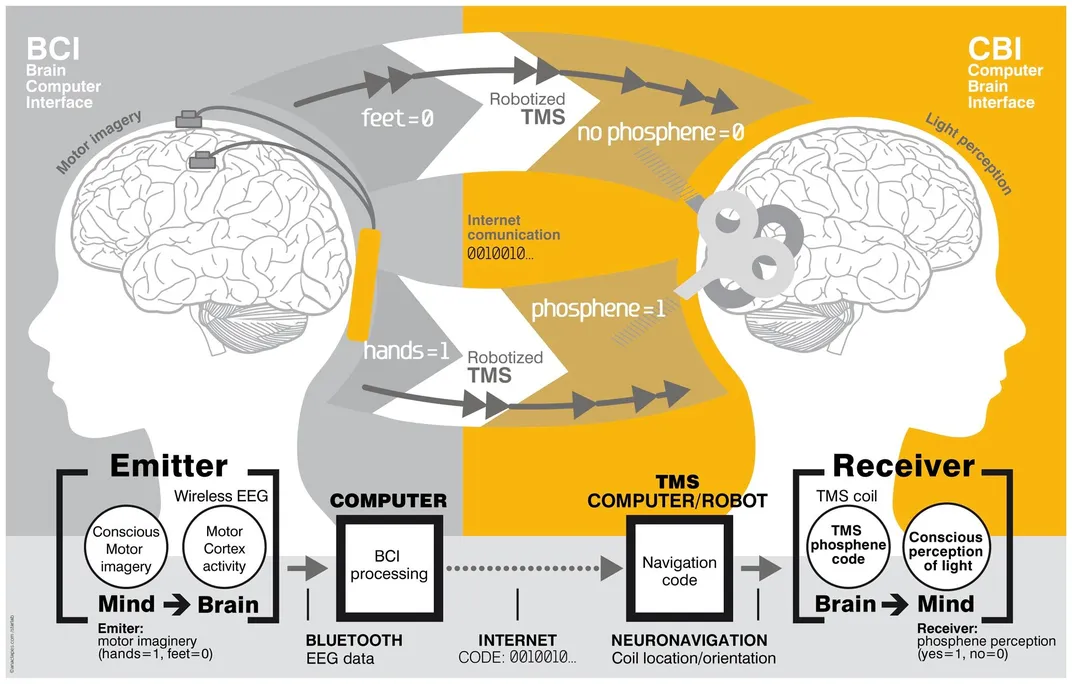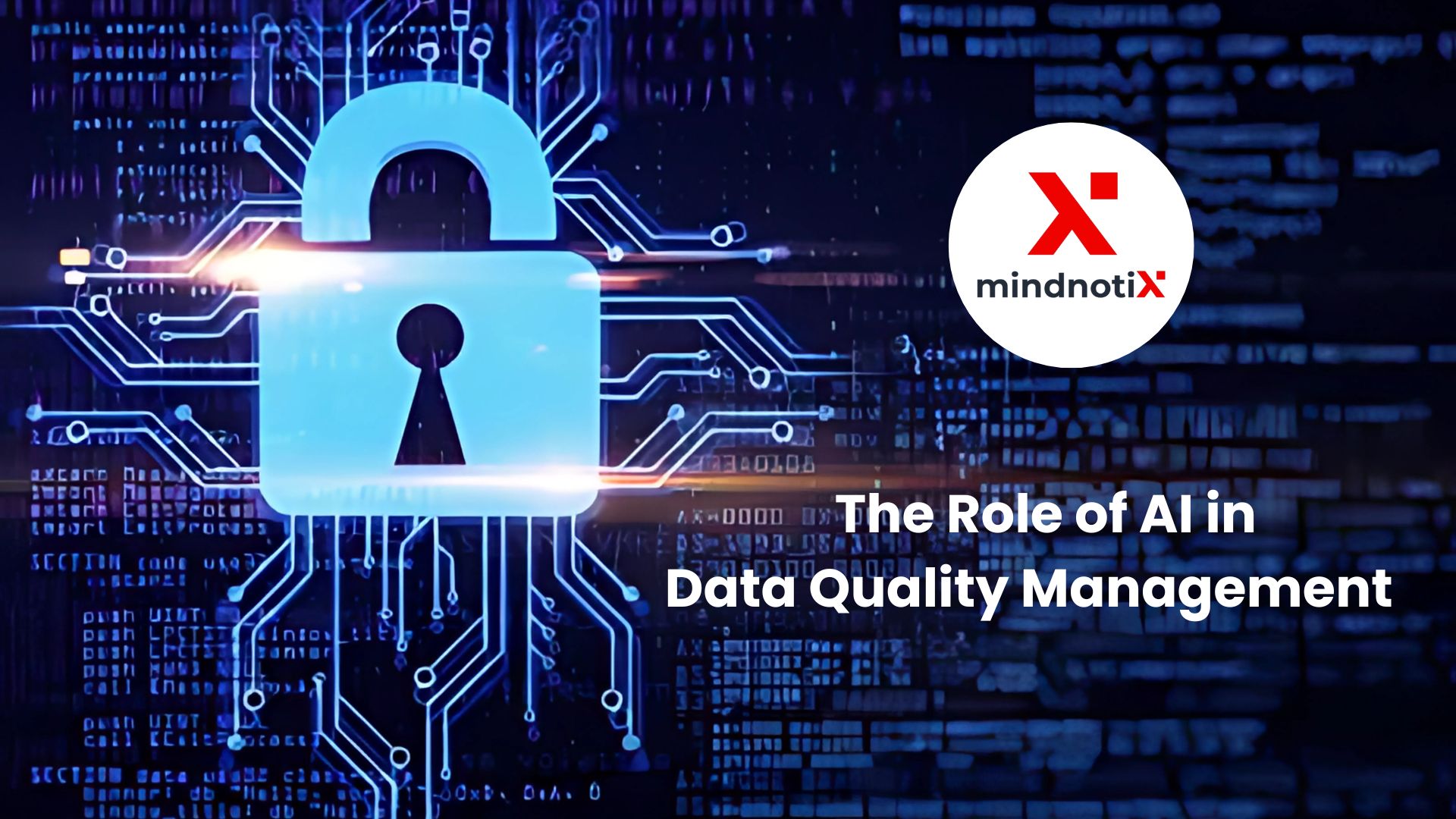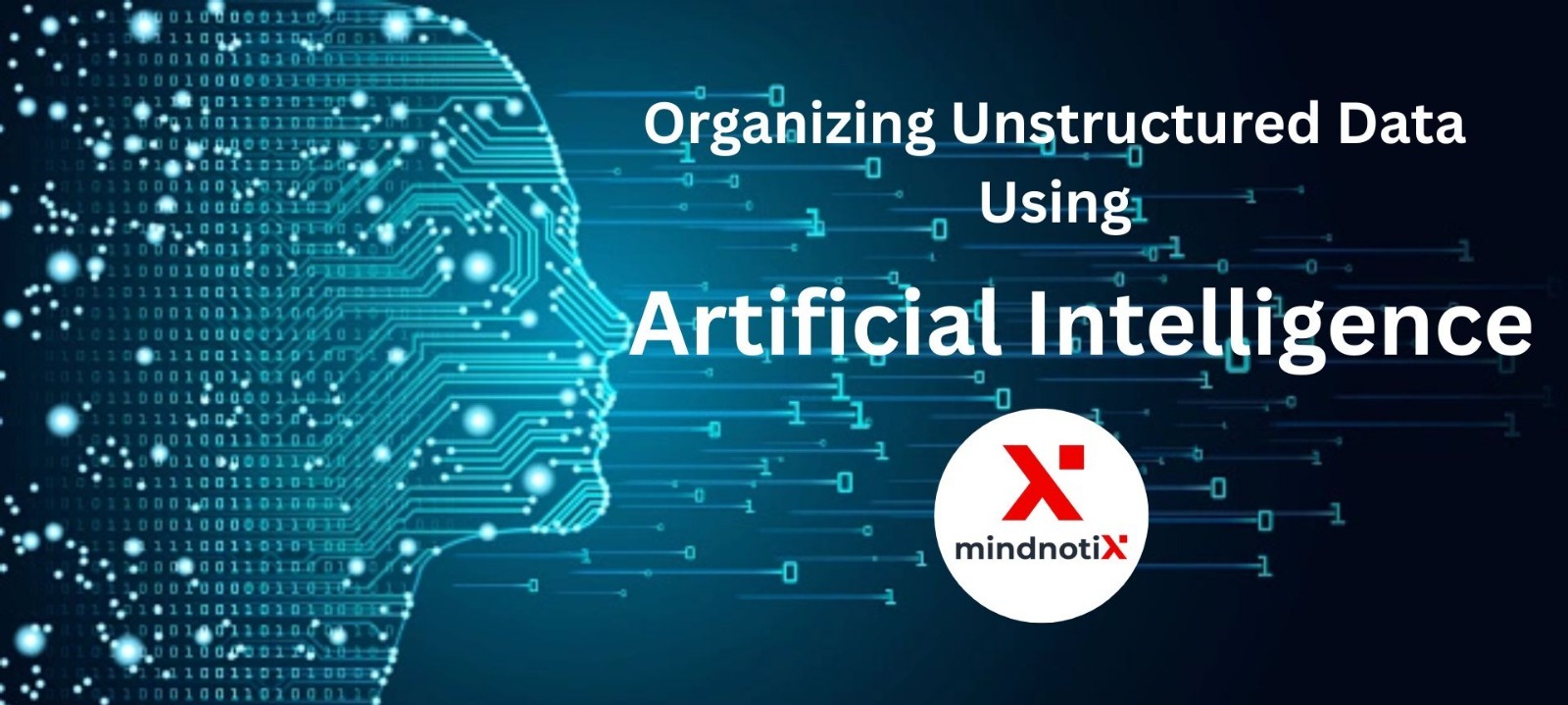Imagine being able to connect to the internet without touching your smartphone, smartwatch, or laptop, communicating with people and everything else using nothing but your mind. How far are we from telepathy and Brain-Computer Interfaces (BCI) that connect us directly to the web?
Brain-Computer Interfaces are an amazing branch of technology, which despite its youth, has the potential to change many of aspects of human society. The essence of BCIs, lies in the potential it has to increase human communication, regardless of which usage you think of for it: rehabilitation, assistive, or even entertainment, the sole idea of being able to convert any kind of brain signal into useful information to control a system, is a big step forward in human communication, but... how far can we go?
The dream
In 2018, Netflix released a movie called “Anon”, if you are interested in neurotechnology or merely enjoy sci-fi movies, you ought to watch this one. “Anon” shows a future, not far from today, where you don’t need to move a finger to check your messages nor open your computer to send that homework essay. Everyone can access the internet and do all we do today, just by using their minds. In this blogger’s humble opinion, the movie shows something close to the ideal fusion of real world and digital one. I won’t discuss much more about the film, because if you haven’t seen it, I seriously recommend you go and do it. But let’s talk about the neurotechnology themes from the movie and compare it to the present-day science.
“Anon” shows a world where every human being is connected in the Ether, a version of the Internet where the human mind has a big roll, starting by the fact that everyone’s life is being recorded at all times until death, what your eyes see and what your ears listen to, it stays in the Ether long after you’re gone; ethics and privacy will be addressed in this blog, but not now; let’s just say not everyone can access your recordings except for you.
The movie shows how everyone can see an augmented reality without any glasses, being able to see things like videos, videogames and messages, they can even videocall each other without any outer computer, just by standing in front of a mirror and showing what their eyes see (themselves) and what they listen to (their own voices) to the other participants of the call. Forgetting about ethical and privacy issues, you would probably love a world like this, just imagine all the power of the Cloud, all the power of Internet in your hand, no! In your mind…
The reality
So, scenario is set, now...what’s the science part of this fiction? Well, firstly, we’re no longer just talking about BCI, we are talking about Brain to Brain Interfaces (BBI), and not even just that, we are talking about a BrainNet here, dear readers. In the words of Linxing Jiang and colleagues, authors of one of the latest papers about BBI’s, and the place from which I took the word BrainNet, “Brain-to-brain interfaces (BBIs) are interfaces that combine neuroimaging and neurostimulation methods to extract and deliver information between brains, allowing direct brain-to-brain communication” (2019). And about BrainNet, well, in the authors’ words, it would be a multi-person BBI.
Secondly, let's talk a little more about the way the Ether works, this proposed BrainNet is surreal, although Cloud storage isn't mentioned, it is not seen that information is kept in one’s memory, only certain people seem to access it and grant access to others, independent of memories, for example, a recording can be edited or even deleted, but the person will still remember it. Regarding how interaction with person-BBI works, it can be split into two, what and how information is given to the brain, and what and how information is extracted from the brain.
1. What and how information is given to brain
People receive information from visualizing it, alike to a videogame character with stats and a map in the corners of their vision, screens popping up to watch multimedia, objects and people in their sight can be identified and information about them displayed, in a call, voices are heard or just music if the fellow wants it so. All of that isn't any kind of VR, nor holograms, or even earphones in the case of sound. Something in people's heads is literally stimulating their brains for this information to be transmitted as an illusion of what it is seen or heard.
Is all this possible? Short answer: not yet. Long answer: BBIs are basically a brain-computer interface (BCI) and a computer-brain Interface (CBI), working together, if you put this in at least 2 individuals, boom! You have a BBI. In the 8 papers you’ll find referenced, you’ll see that there are two methods commonly used to receive information in your brain, Transcranial Focused Ultrasound (TFUS) and Transcranial Magnetic Stimulation (TMS), there is a problem with Hollywood dreams here, as stated by Rajesh P. N. Rao and colleagues, authors of a great BBI pape:
“BBIs can be built out of non-invasive technologies. Because non-invasive technologies are currently simpler and safer for humans than invasive. […] Noninvasive technologies, such as TMS or transcranial current stimulation are currently more limited in both the number of available stimulation sites and the spatial resolution of stimulation targets” (Rao et al., 2014)
Years later and not much has changed, BrainNet’s authors said that “From the first human BBI to BrainNet, the level of information complexity has remained binary […]. Additionally, this low bit rate required a disproportionate amount of technical hardware and setup” (Jiang et al., 2019). So basically, humankind is still not that great at stimulating brains with our current means, even with invasive means, creating an interface for your eyes remains impossible. Until 2020, brain stimulation is binary, despite this, big goals have been achieved, like Sreeja Rajesh et al. being able to send a command selected by the sender (using a BCI of course) to a receiver with TMS, the information was coded and encrypted (applause for caring about security), sent to the Cloud and then to the recipient, who could know the message by interpreting the information based on the seen flashes (2020).
2. What and how information is extracted from the brain
So, there are problems with receiving complex information, but we should not worry about it if we cannot even collect complex information with a BCI. The BCI segment of the BBI proposed in the movie seems to be able to collect all the visual and auditory information from our brains, this is an unconscious action which allowed them to maintain videos of their whole lives in the Cloud. They were also able to write text messages and grant permission to access their information ( that is, to share it), paying for stuff, they basically could give any kind of command, just as the instructions we give today to our computers, smartphones, etc.
The reality is that differentiating between the movement of one arm or the other based on EEG signals can be so hard that it is the thesis topic of many Ph.D. students, not to mention recognizing when you want to make a payment or check your messages. There are a lot of protocols used to get information from brain, in BBI papers, motor imagery and evoked potentials are the most common (LaRocco & Paeng, 2020).
Telepathy 2.0: Direct Communication vs. Thought Reading
Brain-computer interfaces (BCIs) are a hot topic, leading many to dream of "Telepathy 2.0" – using brainwaves to directly communicate with others. But there's a key distinction between this and traditional mind reading. Let's delve into the differences:
Direct Communication:
- Focus on Intent and Specific Thoughts: BCIs are likely to transmit specific thoughts or intentions, not complex emotions or full-blown narratives. Imagine sending a clear message like "pick up milk" or "I'm feeling happy."
- Benefits for those with limitations: For people with speech or motor impairments, BCIs could be a revolutionary communication tool, restoring some level of independence and expression.
- Emerging Technologies: Research on non-invasive BCIs using functional ultrasound (fUS) and wireless interfaces is ongoing, making this technology more accessible in the future.
Thought Reading:
- Unrealistic in the foreseeable future: BCIs currently struggle to decipher the nuances of human thought, making full-blown mind reading highly improbable.
- Ethical Concerns: Imagine someone accessing your deepest thoughts without your consent. Privacy and security become major issues with telepathic communication.
- Challenges of Language Translation: How would complex thoughts and ideas be translated without the structure of spoken or written language?
.
In theory, we could send texts with a BBI, but not just by thinking of the message, it would be more like typing with your sight, looking at keyboards (that, as you read before, cannot be put in your mind for you to see it) with blinking keys.
Now what?
Sorry, telepathy and your brain being connected to the internet is still ways off, but if you liked the movie, get to work and let’s create that future, at the end of this blo I will tell you of research opportunities, but before that, I said we would talk about ethics and privacy, remember?
We are far from the world of “Anon”, yes, but advances are undeniable, and have advanced in a matter of a few years, from controlling the tail movement of a rat (Yoo et al., 2013), to playing videogames in pairs (Rao et al., 2014), and then in triads with the first BrainNet (Jiang et al., 2019), and let’s not forget about the sending of simple messages (Rajesh et al., 2020). Most of the experiments sent the information through the Internet protocol http, and the last one even used the Cloud and encryption.
Without shadow of a doubt, Brain-to-Brain Interfaces have shown a fast evolution. Is this technology good or bad? Well, there are good uses for BBIs, such as “the possibility to increase human cognitive performance due to assistance of another human by sharing a cognitive load between them using a brain-brain interface” (Maksimenko et al., 2019) or the simple possibility of a smoother and easier communication, especially for people with problems for communication, as proposed by Sreeja Rajesh and her team. On the other hand, brain stimulation can also be misused, that is why Elisabeth Hildt, from the Center for the Study of Ethics in the Professions in Illinois Institute of Technology, said the following:

“BBIs and BBI networks are not science-fiction any more [...]. BBIs come along with a number of currently unresolved ethical issues including autonomy, privacy, agency, accountability, and identity.[...] There is a clear need to start thinking right now about how to responsibly shape the development and future use of BBIs and direct brain communication”
Ethical issues do not rely only on those who study laws or philosophy, no matter what your field is, I invite you to think about the concerns that all technologies, included neurotechnology, come with, and the role you have in all of this, either as a researcher or as an interested reader. But, returning to the field of research, I want to remind you that BBI systems are still in their infancy, and there are a lot of experiments that can be a big contribution. As you could see, the biggest problems right now are the obtention and the extraction of information directly from/to the brain, so these are a few possible experimental oportunities that could help to obtain solutions for those challenges.
But well, too much interesting stuff for a film, right? That’s the magic of science-fiction movies, I am looking forward to reading about the next big step on Telepathy, maybe written by any of you, inspired by both this blog and Netflix, of course. Below I present a little idea if you are thinking about create your own BBI, check it out. Neurotechnology is a big field, full of amazing ideas, and as I said, we all have a roll here, which will be yours?
Experimental design suggestion:
As seen before, BBI’s have 2 main components, a BCI and a CBI. At the moment, CBIs (Computer-Brain Interfaces) have been less studied, John LaRocco and Dong-Guk Paeng published a about optimization of CBI parameters to achieve higher Information Transfer Rates (ITR) in BBIs, their study based on the simulation of a binary-state medical monitoring BBI system. The CBI dependent parameters considered were System Latency (time system needs to go from the recording of the signal to the delivery of a stimulation) Time Cutoff (timeout threshold allowed for a stimulus to be delivered) and Stimulation Reliability (chance that first stimulation fails, requiring more attempts). In any case, authors mentioned the need of a real BBI implementation to ratify their findings. They also recommended for further research: the implementation of a self-optimizing paradigm and a confirmation system to ensure Stimulation Reliability (2020).
After all Information Transfer Attempts, Information Transfer Rate on both kind of attempts (with parameters optimization and without optimization) must be analyzed and compared. According to simulations, ITR in parameter optimized trials should show a significantly better performance.

Telepathy 2.0: A New Era of Communication (not Mind Reading):
BCIs hold immense promise for a new era of communication, but it's important to manage expectations. We're more likely to see a future where BCIs augment existing communication methods, allowing people to directly transmit specific thoughts and feelings. This could revolutionize communication for those with disabilities and open new avenues for human-computer interaction.
While the ability to read minds entirely might remain in the realm of science fiction, Telepathy 2.0 offers exciting possibilities for a more connected and inclusive future.
Ethical Considerations
Telepathic communication, even in the limited form achievable through BCIs, raises a plethora of ethical concerns. Here's a deeper dive into the three you mentioned and some additional points to consider:
1. Privacy:
- Unfiltered Thought Access: Unlike spoken or written communication, BCIs might allow access to unfiltered thoughts, emotions, and memories. This raises concerns about protecting a person's inner world and potential embarrassment or manipulation.
- Consent and Boundaries: How do we establish clear boundaries and obtain informed consent for telepathic communication? Can someone block another from accessing their thoughts?
2. Security:
- Hacking and Brainjacking: The brain-computer interface could become a new target for hackers, potentially allowing them to steal thoughts, manipulate emotions, or even implant false information.
- Data Security and Encryption: BCI data needs robust security measures to prevent unauthorized access and misuse.
3. Misuse of Technology:
- Coercion and Interrogation: Imagine a scenario where authorities use BCIs to extract information from suspects during interrogations. This raises concerns about coercion and violation of human rights.
- Weaponization of BCIs: The potential for using BCIs to directly induce pain, fear, or other negative emotions is a terrifying possibility.
Conclusion
The human desire for connection has driven innovation throughout history. Brain-computer interfaces offer a glimpse into a future where communication transcends spoken and written language. While ethical considerations around privacy, security, and misuse are significant, they shouldn't overshadow the potential benefits of this technology. By fostering open dialogue and prioritizing ethical development, we can ensure Telepathy 2.0 becomes a tool for inclusivity, improved communication, and human understanding.
This new era of communication holds immense promise, but the path forward requires careful consideration. Let's embrace the potential of BCIs while ensuring they are developed and used in a way that benefits all of humanity.
For more information contact : support@mindnotix.com
Mindnotix Software Development Company


 AI-Taxi App
AI-Taxi App AI-Food App
AI-Food App AI-Property Mgmt App
AI-Property Mgmt App AI-CRM
AI-CRM AI-Fantasy App
AI-Fantasy App
 Web Development
Web Development App Development
App Development Business & Startup
Business & Startup Hire Developer
Hire Developer
 Digital Marketing
Digital Marketing Lead-generation
Lead-generation Creative Agency
Creative Agency Branding Agency
Branding Agency Augmented Reality
Augmented Reality Virtual Reality
Virtual Reality Internet of Things
Internet of Things Artificial Intelligence
Artificial Intelligence Blockchain
Blockchain Chatbot
Chatbot



